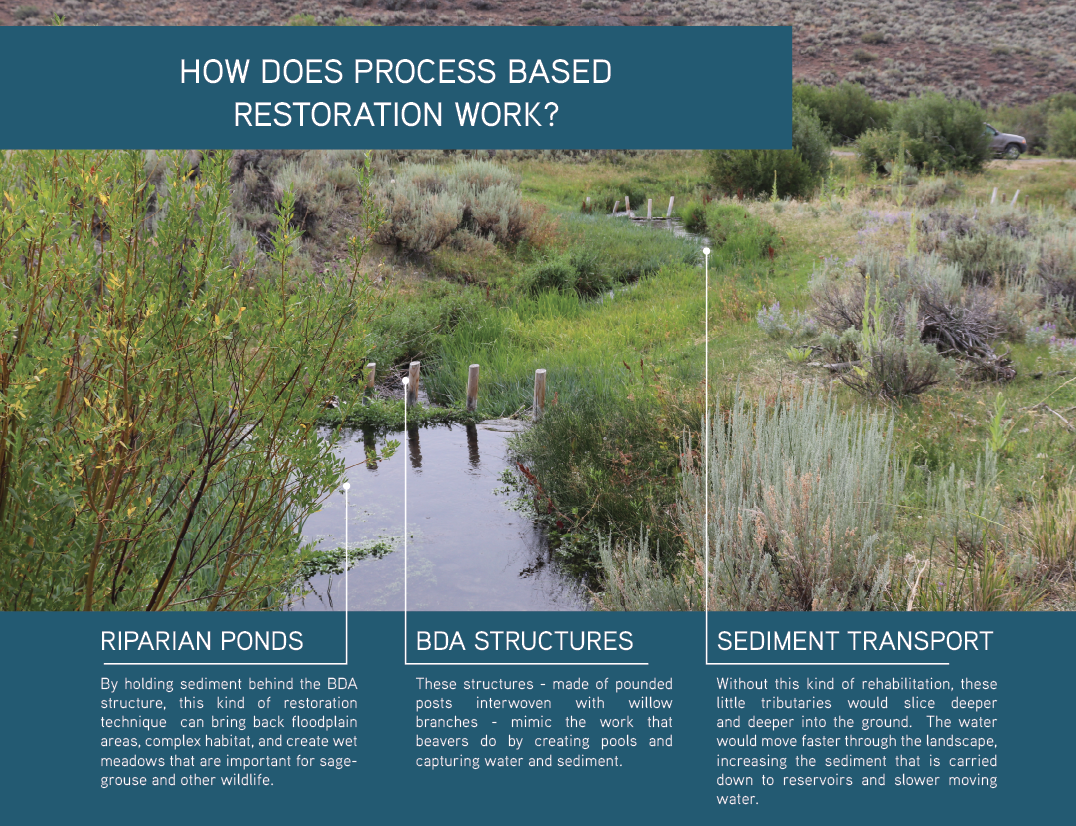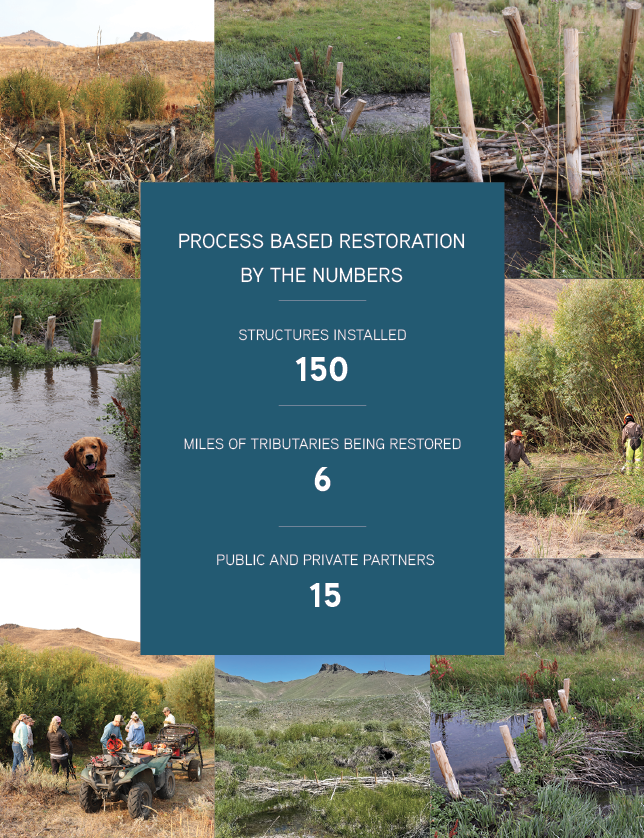What we can learn about wildfire resilience from beavers?
In 2018, the massive Sharps wildfire burned 65, 000 acres, including parts of the Little Wood River and tributaries. What was once sweeping rangeland habitat for wildlife, including sage-grouse, and grazing land for livestock was engulfed in flames. Expecting complete devastation after the fire, landowners, federal and state agencies, and local conservation organizations were all shocked when aerial images revealed some emerald green oases that the fire seemed to have skipped over all together. What was so special about these areas that prevented them from being burned?
After some investigation, we determined that the green patches that survived the fire had been inhabited by beavers! Spots with either existing beaver dams and even the sites of old beaver dams which have created ponds and floodplains were still marshy and filled with lush vegetation. Learn more about the Sharps Fire restoration in the video below:
LESSONS LEARNED FROM NATURE
At the Wood River Land Trust we work to utilize the right restoration techniques for the right situations. Based firmly in science and research, our team analyzes the needs of each stretch of river or section of tributary to determine what kind of restoration should be applied.
Sometimes, that may require a large-scale initiative that utilizes heavy machinery and expert contractors, and sometimes, all we need are woven willows and elbow grease.
One technique that we utilize on smaller tributaries is “process based restoration” - restoration practices that mimic, and encourage natural processes. After the Sharps fire, with a suite of partners, we set out to restore other creeks that had been burned by mimicking these areas that proved to be highly resilient in the face of wildfire.
MIMICKING BEAVER DAMS FOR RESTORATION

Using ‘process-based restoration’ techniques, we are creating “human-made beaver habitat” post-fire to create diverse habitats that will restore hydrology and welcome back the mammals and birds that used this land.
These structures are made of pounded posts interwoven with willow branches. Named by scientists, these beaver dam analog (BDA) structures mimic the work that beavers do by creating pools and capturing water and sediment. Other structures are made entirely of sticks and branches and create meandering bends within straightened sections of stream.
Without this kind of rehabilitation, these little tributaries would slice deeper and deeper into the fire-damaged hills, creating steep banks that canít hold riparian vegetation.
The water would move faster through the landscape, increasing the sediment that is carried down to the Little Wood River and subsequent reservoirs.
This type of restoration is becoming more popular, because it can bring back floodplain areas and complex habitat, such as wet meadows, that are important for sage-grouse and other wildlife.
Our hope is that these stream restoration projects could create even more fire resilience in the future.
BEAVER DAM RESTORATION ON THE RANGE
But that isn't all! In addition to the work that we are doing using BDA structures to restore the Little Wood Drainage, we are also working with the University of Idaho and with private ranchers to examine how BDA structures can restore tributary health on working rangelands.
Throughout history, beavers and other wildlife were removed from the landscape to accommodate grazing. Ironically, this has lead to tributaries cutting deeply into the landscape, becoming disconnected from the surrounding landscape. This has led to the disappearance of floodplain and mesic meadows that are important for wildlife and working rangelands.
A HEALTHY ECOSYSTEM FOR LANDSCAPE RESILIENCE
As we restore these tributaries and reconnect them to the landscape, we can regenerate riparian habitats. This can create healthier ranges for sheep and cattle as well as enhancing overall ecosystem health for all species.
Not only are we restoring this land for tributary health and to accommodate the animals that need it now, but we also are hoping that in the face of a changing climate, these restoration sites will prove as resilient as the beaver-inhabited sites did in the 2018 Sharps fire.
Of course, the Wood River Land Trust isn't doing this alone.
As a member of the Wood River Land Trust, you are among those critical partners that make the work we do possible. Members of the Land Trust can look out across the landscape, and know that you are helping to restore these interconnected ecosystems and rangelands that make our home here in the heart of Idaho so iconic.


